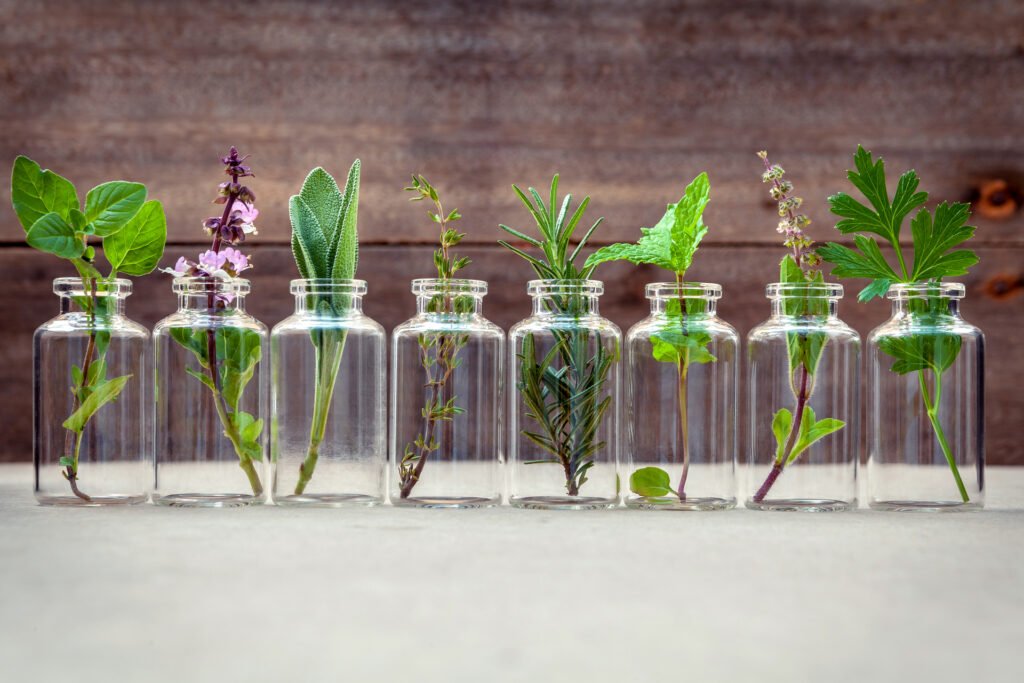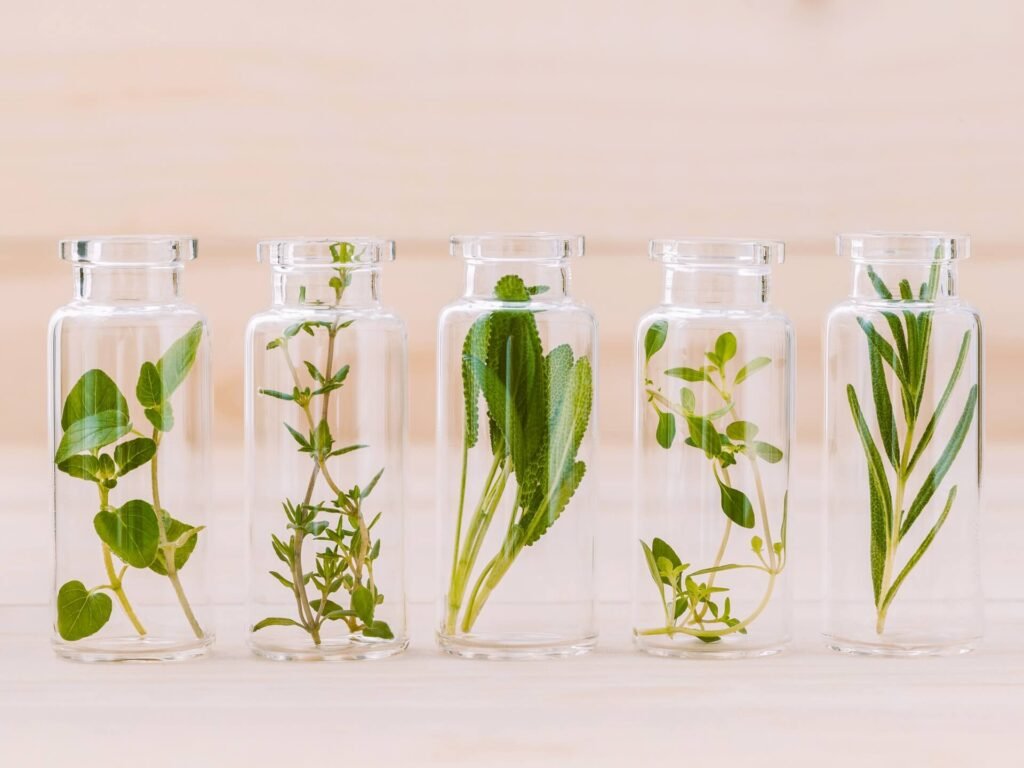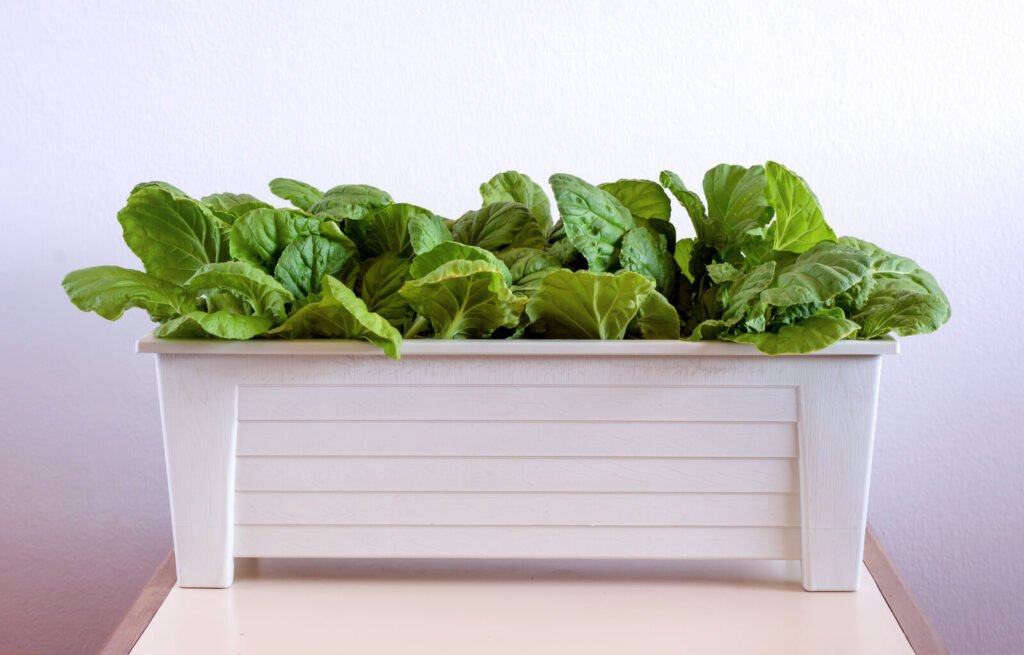All plant lovers know that growing fresh herbs is an extremely rewarding experience. Not only do they add flavor and aroma to our favorite dishes, but they also have numerous health benefits.
However, not everyone has access to an outdoor garden or has the time and space for traditional soil-based gardening. That’s where hydroponic herb gardens come in. With the help of this efficient and environmentally-friendly system, you can grow fresh herbs all year round, right in the comfort of your own home.
What is a Hydroponic Herb Garden?
A hydroponic herb garden is a soil-free, water-based method of growing herbs using hydroponic systems. Unlike traditional soil-based gardening, hydroponic gardening involves growing plants directly in nutrient-rich water solutions that provide all the necessary nutrients and minerals required for plant growth.
Hydroponic gardening is highly efficient and effective, especially in a hydroponics growing system, allowing for faster sprout growth rates, higher yields, and a more controlled environment that eliminates the need for pesticides or herbicides. Hydroponic systems are a perfect solution for growing and harvesting fresh herbs indoors all year round, regardless of changing weather conditions or limited outdoor space.
There are several types of smart gardens where plants grow optimally. hydroponic systems that are suitable for growing herbs indoors:
| Hydroponic System Type | Description |
|---|---|
| Smart garden: Deep Water Culture (DWC) | Air pumps provide oxygen to roots that are suspended in the nutrient solution in buckets or containers. |
| Ebb and Flow | A timer-based system floods and drains nutrients in a tray and plant containers growing on top of the tray. |
| Drip Irrigation | A pump delivers nutrient solution through a network of hoses and drippers, providing a steady supply of nutrients to plant roots. |
| Aeroponics | A pump delivers nutrient solutions through a fine mist, directly to the plant roots, allowing for maximum aeration and root uptake. |
Hydroponic gardening is a game-changer in the world of indoor herb gardens, providing a sustainable, efficient, and nutrient-dense solution for growing fresh herbs all year round.
Setting up Your Hydroponic Herb Garden
Now that you’ve decided to grow your own hydroponic herbs, it’s time to set up your system. With proper planning and equipment, you can create a thriving herb garden in the comfort of your own home. Here is a step-by-step guide to getting started with your hydroponic setup:
- Choose Your System: There are various types of hydroponic systems available for your countertop, including deep water culture, nutrient film technique, and drip irrigation. Select the system that best suits your available space, budget, and expertise.
- Essential Equipment: In addition to your hydroponic system, you’ll need other essential equipment, such as a grow light, timer, water pump, pH tester, and nutrient solution. Research and purchase high-quality equipment to ensure the success of your garden.
- Lighting: Lighting is crucial for indoor herb gardening. Choose a full-spectrum LED grow light that emits the appropriate wavelengths for plant growth. Position your grow light 12-18 inches above your plants and adjust its height according to your plant’s growth stage.
- Nutrient Solutions: Hydroponic plants require nutrient solutions instead of soil for their growth. Purchase pre-formulated nutrient solutions or experiment with mixing your own using fertilizer salts, ensuring proper nutrient balance and pH levels.
- Plant Containers: Choose containers appropriate for your hydroponic system and the size of your plants. Net pots or mason jars with netted lids are ideal choices for most hydroponic herb gardens.
Creating a hydroponic herb garden involves attention to detail, patience, and ongoing maintenance. With the right equipment and technique, you can enjoy a bountiful harvest of fresh, flavorful herbs throughout the year.

Choosing the Right Herbs for Hydroponic Gardening
Hydroponic gardening offers an ideal environment for growing a wide variety of herbs, including those that are typically grown outdoors. To choose the right herbs for your hydroponic setup, consider factors such as:
- Growth habits in hydroponics: Some herbs, like basil and mint, will grow quickly and bush out, while others, such as chives and cilantro, will stay more compact once you add water and plant food.
- Nutrient requirements: Different herbs require different nutrient levels, so choose herbs with similar needs if you plan on growing them together.
- Taste preferences: Select herbs that you and your family enjoy and use often in your cooking to make the most of your hydroponic garden.
Some examples of herbs that thrive in hydroponic systems include:
| Herb | Light Requirements | Nutrient Requirements |
|---|---|---|
| Basil | High light requirements | High nitrogen, moderate potassium and phosphorus |
| Mint | Medium to high light requirements | Low to moderate nutrient requirements |
| Chives | Low to medium light requirements | Low to moderate nutrient requirements |
| Parsley can thrive in a hydroponics growing system. | Low to medium light requirements | Low to moderate nutrient requirements |
| Thyme | Low to medium light requirements | Low to moderate nutrient requirements |
Remember, there are many other herbs that may also do well in hydroponic systems, so don’t be afraid to experiment. By carefully selecting the right herbs and providing optimal growing conditions, you can enjoy fresh, flavorful herbs year-round.
Providing Optimal Growing Conditions
Creating the perfect environment is essential for a thriving indoor hydroponic herb garden. To ensure the best results, here are some tips:
Temperature and Humidity: Most herbs prefer a temperature of around 70°F (21°C) and humidity levels around 50-60%. However, it’s important to note that some herbs may differ in their requirements and it’s advisable to research specific needs based on the variety you’re growing. Use a thermometer and hygrometer to monitor the temperature and humidity levels in your growing area.
Airflow in a smart garden: Adequate airflow is crucial for healthy herb growth as it helps to prevent stagnant air and the development of mold or mildew. Use a small fan or ventilation system to keep air moving in the growing area and avoid overcrowding plants.
Light: As discussed earlier, lighting is a critical factor in indoor hydroponic gardening. Use LED grow lights, as they are energy-efficient and provide the perfect spectrum of light for your herbs. Aim for 12-16 hours of light per day in your hydroponics growing system, adjusting the distance and intensity of the lights according to the needs of your plants.
With the right growing conditions, your indoor hydroponic herb garden will thrive, bringing fresh and flavorful herbs to your kitchen all year round.
Nutrient Management in Hydroponic Herb Gardens
Successful hydroponic farming processes rely on maintaining the right nutrient balance in the growing medium to ensure healthy plant growth. In hydroponic herb gardens, plants get nutrients from their growing medium instead of the soil, making nutrient management crucial.
Hydroponic systems require three essential nutrients for plant growth:
| Nutrient | Description |
|---|---|
| Nitrogen (N) | Boosts growth and promotes the development of healthy leaves |
| Phosphorus (P) | Encourages a robust root system and helps with photosynthesis in hydroponic growing environments. |
| Potassium (K) | Assists in flower and fruit development and strengthens the plant against disease |
Other essential micronutrients for hydroponic herb gardening include calcium, magnesium, and iron.
Proper nutrient management involves monitoring pH levels and nutrient concentration in the water and adjusting accordingly. Most hydroponic nutrients come in concentrated liquid or powder form, making it easy to achieve precise nutrient dosages.
Over-fertilizing or under-fertilizing can harm plants and reduce yields. Too much of one nutrient can block the uptake of another, resulting in nutrient deficiencies. Conversely, not getting enough nutrients can stunt plant growth and weaken plant health.
It’s important to follow the manufacturer’s instructions when adding nutrients to the water and regularly recalibrate pH meters to ensure accurate readings.

Monitoring and Maintaining Your Hydroponic Herb Garden
Regular maintenance is necessary for keeping your hydroponic herb garden healthy and thriving. Here are some tips to ensure optimal growth:
- Monitor the pH levels: Test the pH levels of your nutrient solution regularly using a pH meter or test kit. The ideal pH range for most herbs is between 6.0 and 6.5. Adjust the pH as necessary by adding pH up or pH down solutions to the nutrient reservoir.
- Manage pests and diseases: Keep a close eye on your plants for signs of pests and diseases. Use organic pesticides or natural predators, like ladybugs, to control pest populations. Remove any infected plants immediately to prevent the spread of disease.
- Prevent nutrient deficiencies in hydroponics by using adequate plant food. Nutrient imbalances can result in stunted growth or discoloration of your plants. Make sure to keep track of nutrient levels and adjust the nutrient solution as needed. You can also add micronutrient supplements to help prevent deficiencies.
Regularly inspecting your plants for any issues and making necessary adjustments can help prevent larger problems from arising. Set up a maintenance schedule to keep your garden healthy and flourishing.
Harvesting and Using Your Homegrown Herbs
Once your hydroponic herb garden is up and running, it’s time to reap the rewards of your hard work. Harvesting your herbs is an exciting and satisfying experience, and it’s important to do it right to ensure maximum flavor and freshness.
Herbs can sprout and be harvested as soon as they reach maturity in a smart garden, which is typically when they have a strong aroma and vibrant color. To harvest, simply snip off the leaves or stems using sharp, clean scissors or shears.
When harvesting basil, for example, pinch off the top two sets of leaves above a leaf pair to promote bushier growth. For mint, cut just above a leaf node to encourage branching.
Once you’ve harvested your herbs, it’s time to put them to use! Homegrown herbs are a great addition to any dish, adding fresh, bold flavors and aromas.
One of the best ways to use your herbs is to make your own herb-infused oils and vinegars. Simply fill a jar with your favorite herbs, cover with oil or vinegar, and let sit for a few days before straining and using.
Pro tip: Try combining herbs like rosemary and thyme for a savory herb blend, or lavender and lemon balm for a floral, refreshing flavor.
You can also use your homegrown herbs to make herbal teas, tinctures, and even homemade beauty products like soaps and lotions.
Troubleshooting and Common Issues in Hydroponic Herb Gardens
While hydroponic farming has numerous benefits and can be an enjoyable experience, like any type of gardening, it is not without its challenges. Below are some common issues that may arise in hydroponic herb gardens and tips for resolving them:
Root Rot
Overly wet growing conditions are the root cause of root rot, a fungal disease. Symptoms include unhealthy and slimy roots, deterioration of the plant stem, and yellowing leaves. To prevent root rot, be sure to monitor the water levels in your hydroponic system and ensure adequate air circulation around your plants. Disinfect your hydroponic system regularly and consider using a hydrogen peroxide solution to kill any pathogens that may be present.
Nutrient Imbalances
One of the most common issues with hydroponic farming is maintaining the correct balance of nutrients in the plant’s growing solution. Symptoms of nutrient imbalances include stunted growth, discolored leaves, and wilting. To resolve nutrient imbalances, monitor your plants’ nutrient levels regularly and adjust your nutrient solution accordingly. Consider using a pH meter to ensure that your nutrient solution remains within the recommended pH range for your plants.
Pest Infestations
Pests like spider mites, aphids, and thrips can have an impact on hydroponic farming, just like they can with traditional gardening. Symptoms of pest infestations include yellowing leaves, stippling on leaves, or small webs on the plant. To control pests in your hydroponic herb garden, consider using natural pest control methods such as spraying your plants with neem oil or releasing beneficial insects like ladybugs or lacewings, to keep your smart garden flourishing. Alternatively, use sticky traps to capture and control flying insects.
Remember that prevention in hydroponics is always better than a cure. Regular monitoring and maintenance of your hydroponic system can help prevent most of these common issues from occurring.

Conclusion
Investing time and effort into setting up a hydroponic herb garden is a great way to bring fresh, healthy, and flavorful herbs into your home all year round. Hydroponic gardening offers several benefits over traditional soil-based gardening, including faster growth rates, greater control over growing conditions, and the ability to grow in small spaces.
With fresh herbs at your fingertips, you can elevate the taste of your culinary dishes and experiment with new recipes.Remember to keep a close eye on your hydroponic herb garden to ensure that it remains healthy and free from pests and diseases. With proper maintenance and nutrient management, you can continue to enjoy your indoor herb garden for years to come.
People also ask
Q: What is indoor hydroponic herb gardening?
A: Indoor hydroponic herb gardening is a method of growing herbs indoors without soil, using a nutrient-rich water solution to nourish the plants.
Q: What are the benefits of having an indoor herb garden?
A: Having an indoor herb garden provides fresh herbs year-round, saves money, allows for easy access to herbs while cooking, and adds natural beauty to indoor spaces.
Q: What are the best indoor herb garden systems?
A: The best indoor herb garden systems include hydroponic systems like Aerogarden, smart indoor gardens such as Gardyn Home Kit, and traditional indoor garden kits with LED grow lights and water reservoirs.
Q: How do indoor hydroponic herb gardens work?
A: Indoor hydroponic herb gardens work by providing essential nutrients to the plants’ roots through a water-based solution, with the plants typically growing in pods or containers, often with LED grow lights for photosynthesis.
Q: What should I look for in an indoor hydroponic herb garden system?
A: When choosing an indoor hydroponic herb garden system, consider factors such as ease of use, size and number of plants it can accommodate, growth light quality, water and nutrient delivery system, and compatibility with various herbs.
Q: How do indoor herb garden kits help in growing herbs?
A: Indoor herb garden kits provide the necessary environment for herb growth, including adjustable LED grow lights, self-watering systems, and pre-seeded pods or seedling containers, making it easier for anyone to grow herbs indoors.
Q: Can I grow a variety of herbs using an indoor hydroponic system?
A: Yes, indoor hydroponic systems support growing various herbs such as basil, mint, parsley, cilantro, thyme, oregano, and more, providing the suitable conditions for thriving herb growth.
Q: How do smart indoor gardens help in growing herbs?
A: Smart indoor gardens provide automated systems for watering, lighting, and nutrient delivery, often controlled through an app, making the process of growing herbs indoors low-maintenance and convenient.
Q: What are the essential elements for successful indoor herb gardening?
A: The essential elements for successful indoor herb gardening are adequate lighting, proper water and nutrient delivery, suitable growing medium (such as hydroponic pods), and regular monitoring of herb growth.
Q: How long does it take to grow herbs using indoor hydroponic systems?
A: The time to grow herbs using indoor hydroponic systems varies depending on the specific herb and growth conditions, but on average, herbs can be ready for harvest in 4-6 weeks from the time of planting.
